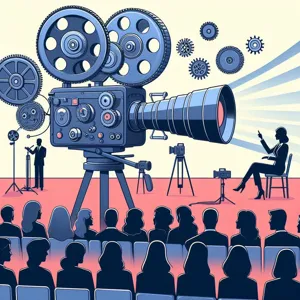Soccer, often dubbed “the beautiful game,” has the power to unite people from all walks of life, transcending boundaries of culture, language, and ability.
Yet, despite its global appeal, barriers still exist that prevent many individuals from fully participating in this vibrant sport. From socioeconomic challenges to issues of accessibility and representation, the path to inclusivity in soccer can be riddled with obstacles. In this blog post, we will explore effective strategies to cultivate a more inclusive soccer community, ensuring that everyone—regardless of their background, gender, or physical ability—can share in the joy of the game. Join us as we kick down these barriers and pave the way for a richer, more diverse soccer experience, one that truly reflects the spirit of teamwork, respect, and unity that the sport embodies.
1. Understanding the Importance of Inclusivity in Soccer

Inclusivity in soccer is not just a trend; it’s a powerful movement that reflects the essence of the sport itself—unity, teamwork, and respect. As one of the most popular sports globally, soccer has the unique ability to bring together individuals from diverse backgrounds, cultures, and experiences. Understanding the importance of inclusivity in this beautiful game is paramount for fostering a welcoming environment where everyone feels valued and empowered to participate.
At its core, inclusivity means creating opportunities for everyone to engage in soccer, regardless of their gender, race, socioeconomic status, or ability level. It breaks down the barriers that have historically kept marginalized groups from enjoying the sport or pursuing their ambitions within it. When we embrace inclusivity, we not only enrich the soccer community but also enhance the game itself. A diverse range of perspectives leads to creative strategies on the field, innovative coaching styles, and a more vibrant atmosphere in the stands.
Moreover, inclusivity promotes positive social change. Soccer has the potential to serve as a platform for raising awareness about social issues, challenging stereotypes, and advocating for equality. By championing inclusivity, we cultivate a culture where respect and acceptance thrive, paving the way for future generations of players and fans who will carry the torch of diversity forward.
In the following sections, we will explore actionable strategies that clubs, organizations, and individuals can implement to create a more inclusive soccer community. From grassroots initiatives to professional leagues, everyone has a role to play in ensuring that soccer is a game for all. Together, we can kick down the barriers and build a brighter, more inclusive future for the sport we love.
2. Identifying Common Barriers to Participation
Creating a truly inclusive soccer community requires a deep understanding of the barriers that prevent individuals from participating in the sport. These barriers can be multifaceted, often stemming from social, economic, cultural, or physical challenges. Identifying these obstacles is the first step toward dismantling them and fostering an environment where everyone feels welcome on the field.
One significant barrier is financial constraints. The costs associated with joining a soccer league—such as registration fees, uniforms, and equipment—can be prohibitive for many families, particularly in underserved communities. By recognizing this challenge, clubs can implement scholarship programs, offer sliding scale fees, or even provide equipment loans to ease the financial burden.
Cultural perceptions also play a crucial role in participation. In some communities, soccer may not be seen as a viable or appropriate activity for certain groups, particularly women and girls. Engaging with local leaders and influencers to promote the benefits of soccer can help shift these perceptions and encourage broader participation.
Additionally, physical barriers can hinder access to soccer fields and facilities. Poorly maintained fields, lack of transportation options, or insufficient accessible facilities for individuals with disabilities can all deter potential players. By conducting assessments of local infrastructure and advocating for improvements, soccer organizations can ensure that everyone has the opportunity to play.
Finally, awareness and outreach are essential in identifying barriers. Many individuals may not even be aware of available programs or opportunities. Establishing strong community relationships, utilizing social media, and hosting open house events can help raise awareness and invite individuals to participate without fear of exclusion.
By acknowledging and understanding these common barriers, we can take actionable steps to create a more inclusive soccer community where everyone, regardless of their background or circumstances, can experience the joy of the game.
3. Building Awareness: The Role of Education in Inclusivity

Education serves as the cornerstone of inclusivity in the soccer community, acting as both a catalyst for change and a unifying force that bridges gaps between diverse groups. By fostering an environment where knowledge and understanding thrive, we can dismantle the barriers that often hinder participation and create a space where everyone feels welcome.
To begin with, educational initiatives can help dispel myths and stereotypes associated with different demographics within soccer. Workshops, seminars, and training sessions that focus on topics such as cultural sensitivity, gender equality, and the importance of accessibility can provide coaches, players, and administrators with the tools they need to engage with a broader audience. For instance, teaching coaches how to recognize and address implicit biases can lead to more equitable treatment of all players, regardless of their background.
Furthermore, integrating education into youth programs can empower young athletes to advocate for inclusivity themselves. By instilling values of diversity and respect from a young age, we can cultivate a new generation of players who champion inclusivity both on and off the field. This could involve creating curricula that highlight the contributions of underrepresented groups in soccer history, thereby broadening the understanding of the sport’s rich tapestry.
Additionally, partnerships with local schools and community organizations can help raise awareness and encourage participation among underrepresented groups. By hosting soccer clinics, free workshops, and community events, we can create opportunities for individuals from all walks of life to experience the joy of soccer. These initiatives not only promote the sport but also foster a sense of belonging and community, making it clear that soccer is for everyone.
In summary, education is a powerful tool that can drive inclusivity in the soccer community. By prioritizing awareness and understanding, we can lay the groundwork for a more diverse and equitable environment, ensuring that every player, regardless of their background, feels empowered to kick down barriers and embrace the beautiful game.
4. Creating Safe Spaces for All Players
Creating safe spaces for all players is crucial in fostering an inclusive soccer community. It goes beyond simply providing a field to play on; it involves cultivating an environment where every individual feels respected, valued, and free to express themselves. This starts with establishing clear policies and guidelines that emphasize the importance of respect and inclusivity, ensuring that all players—regardless of their background, gender, ability, or sexual orientation—are aware that they belong.
One effective strategy is to implement training programs for coaches, referees, and volunteers focused on diversity and inclusion. By equipping them with the tools to recognize and combat discriminatory behavior, you create a safer and more supportive atmosphere on and off the field. Additionally, fostering open dialogue among players and their families can help identify specific challenges faced by underrepresented groups, allowing the community to address these issues head-on.
Moreover, consider creating affinity groups or support networks within your organization. These groups can serve as safe havens for players who may feel marginalized, providing them with a platform to share their experiences and connect with others who understand their challenges. Whether it’s organizing workshops, panel discussions, or social events, these initiatives can help build solidarity and a sense of belonging.
Physical spaces also play a critical role in inclusivity. Ensuring that facilities are accessible to all players, including those with disabilities, is essential. This means not only having ramps and proper signage but also creating gender-neutral restrooms and changing areas that cater to everyone’s needs.
Ultimately, creating safe spaces for all players is about more than just policies and programs; it’s about fostering a culture of empathy and kindness. When players feel secure in their environment, they are more likely to participate fully, support one another, and contribute to a vibrant, inclusive soccer community that celebrates diversity in all its forms.
5. Promoting Diversity in Coaching and Leadership

Promoting diversity in coaching and leadership is essential for fostering an inclusive soccer community that reflects the richness of its participants. The coaching staff and leadership teams are not just responsible for developing players’ skills; they serve as role models and mentors who shape the culture of the sport. By incorporating individuals from diverse backgrounds into these positions, we can create an environment that values different perspectives, experiences, and ideas.
To begin with, organizations should actively seek out coaches from various ethnicities, genders, and socio-economic backgrounds. This can be achieved through targeted recruitment efforts, partnerships with community organizations, and scholarship programs that encourage underrepresented individuals to pursue coaching certifications. By diversifying the pool of coaches, we not only cultivate a richer learning environment for players but also send a powerful message about the importance of representation in leadership roles.
Additionally, ongoing training and development opportunities should be made available for coaches from diverse backgrounds. This includes mentorship programs where experienced coaches can guide newcomers, workshops that address unconscious bias, and resources that foster cultural competency. By equipping coaches with the tools they need to lead effectively, we empower them to inspire the next generation of players.
Furthermore, it’s crucial to create leadership pathways within soccer organizations. Establishing clear criteria for advancement and offering opportunities for professional development can help ensure that diverse voices are heard and valued. When young athletes see coaches and leaders who look like them, they are more likely to feel a sense of belonging and aspiration within the sport.
In promoting diversity in coaching and leadership, we enrich the soccer community as a whole. We create an atmosphere where everyone feels welcome, valued, and capable of contributing to the beautiful game. By leveraging the unique strengths and insights of a varied coaching staff, we not only enhance player development but also build a thriving, inclusive soccer culture that celebrates the diversity of its participants.
6. Implementing Inclusive Policies and Practices
Implementing inclusive policies and practices is essential for fostering a soccer community where everyone feels valued and empowered to participate. This begins with assessing your organization’s current policies to identify areas where inclusivity may be lacking. Are there barriers that prevent certain groups from accessing programs, such as financial constraints, language barriers, or physical accessibility issues? By acknowledging these challenges, you can begin to develop targeted strategies to address them.
One effective approach is to create a comprehensive inclusion policy that outlines your commitment to diversity, equity, and inclusion. This policy should be communicated clearly to all members, coaches, and volunteers, ensuring that everyone understands the importance of creating a welcoming environment. Regular training sessions can be invaluable in equipping staff and volunteers with the tools they need to support players of all backgrounds, including those with disabilities, different ethnicities, and varying socioeconomic statuses.
Additionally, consider implementing flexible scheduling for practices and games to accommodate families with different commitments, such as work or school. This can also mean providing scholarships or sliding scale fees to ensure that financial limitations do not prevent anyone from joining. Furthermore, outreach efforts to underrepresented communities can help raise awareness about your programs and demonstrate a genuine commitment to inclusivity.
By embedding these inclusive practices into your organization’s culture, you not only create a more welcoming environment but also enrich the soccer community as a whole. When everyone feels they belong, the game becomes more vibrant, diverse, and ultimately, more enjoyable for everyone involved.
7. Engaging with Underrepresented Communities

Engaging with underrepresented communities is a vital strategy for fostering a more inclusive soccer culture that celebrates diversity and attracts a broader audience. Socioeconomic barriers, cultural differences, and limited access to resources often hinder participation in soccer, but by actively reaching out to these communities, we can break down those walls and create more equitable opportunities for everyone.
One effective approach is to collaborate with local organizations and community leaders who already have established trust and rapport within these groups. By partnering with schools, youth clubs, and community centers, soccer organizations can introduce programs tailored to the specific needs and interests of underrepresented youth. This could include free training sessions, after-school programs, or even community-led tournaments that encourage participation regardless of skill level or background.
Additionally, creating scholarships or financial aid programs can help alleviate the costs associated with playing soccer, such as registration fees, uniforms, and equipment. Ensuring that all children, regardless of their economic situation, have the chance to participate will not only enhance team diversity but also enrich the soccer experience for everyone involved.
Moreover, outreach efforts should emphasize cultural sensitivity and inclusivity. Hosting multicultural events that celebrate the diverse backgrounds of players and fans can foster a sense of belonging while highlighting the unifying power of sport. Inviting local artists, musicians, and chefs to showcase their talents during soccer events can create a festive atmosphere that resonates with various communities and encourages participation.
Finally, it’s essential to create a feedback loop where community members feel heard and valued. Regularly engaging with underrepresented groups to understand their needs and challenges will allow soccer organizations to adapt their strategies effectively. By building relationships based on trust and respect, we can create a soccer community that is not only inclusive but also rich in cultural diversity, ultimately leading to a more vibrant and unified sport for all.
8. Collaborating with Local Organizations and Schools
Collaborating with local organizations and schools is a vital strategy for fostering inclusivity within the soccer community. These partnerships can serve as a bridge, connecting diverse groups and creating a more welcoming environment for everyone, regardless of their background or skill level. By working together, soccer clubs can tap into the resources, networks, and insights of these organizations, leading to innovative programs and outreach initiatives that resonate with the needs of the community.
Imagine a local soccer club teaming up with nearby schools to host after-school programs that introduce kids to the sport. Not only does this provide access to soccer for those who might not have considered it before, but it also cultivates a sense of belonging. Schools can promote the benefits of soccer, such as teamwork, discipline, and physical fitness, while clubs can offer coaching clinics that empower students to develop their skills in a supportive environment.
Moreover, collaborating with community organizations that focus on underrepresented groups can help break down barriers that often keep people from participating in soccer. For instance, working with immigrant support groups can create tailored programs that address language barriers and cultural differences, ensuring that newcomers feel welcome on and off the field. Additionally, partnerships with organizations focused on disability inclusion can lead to the development of adaptive soccer programs, allowing players of all abilities to engage in the sport.
By aligning efforts with schools and local organizations, soccer clubs can also leverage funding opportunities and resources that might otherwise be out of reach. Whether it’s securing grants for equipment or facilities or gaining access to community events where they can introduce soccer to a broader audience, these collaborations can significantly enhance the club’s impact.
Ultimately, the goal is to build a soccer community that reflects the diversity of the area it serves. By actively engaging with local schools and organizations, clubs can create pathways for participation, break down the barriers that keep individuals from joining, and help foster a culture of inclusivity that will not only enrich the soccer experience but also strengthen the community as a whole.
9. Creating Accessible Facilities and Resources
Creating accessible facilities and resources is paramount to fostering an inclusive soccer community. When we think about accessibility, it’s essential to go beyond just physical structures; we must consider a holistic approach that meets the diverse needs of all players, coaches, and fans.
First and foremost, soccer fields should be designed or retrofitted to accommodate individuals with disabilities. This includes ensuring that playing surfaces are even and well-maintained, with proper pathways leading to the fields. Accessible seating areas, restrooms, and locker rooms must be integrated into facility designs, allowing everyone to participate without barriers.
In addition to physical infrastructure, providing resources that cater to varying skill levels is crucial. This can involve offering equipment such as adaptive soccer balls, wheelchairs for those with mobility impairments, or specialized training aids for visually impaired players. By making these resources readily available, clubs can empower individuals to engage fully in the sport.
Moreover, educational programs and workshops for coaches and staff on inclusivity and adaptive coaching techniques can further enhance the community’s accessibility. Training sessions that emphasize empathy, understanding, and practical strategies for inclusivity will encourage a culture where every player feels valued and capable.
Finally, it’s essential to promote awareness of these accessible facilities and resources within the community. By utilizing social media, local partnerships, and outreach programs, organizations can ensure that everyone knows what is available to them. Creating an environment where all individuals feel welcome and supported will not only enrich the soccer experience but will also strengthen the bonds within the community, ensuring that we all kick down the barriers together.
10. Highlighting Success Stories: Inclusive Programs in Action
Highlighting success stories is crucial in demonstrating the power of inclusive programs within the soccer community. These narratives not only inspire but also illustrate the tangible benefits of fostering a welcoming environment for players of all backgrounds and abilities. When we share the journeys of individuals who have thrived in inclusive soccer programs, we showcase how the sport can serve as a platform for personal development, community building, and social change.
Take, for example, the “Soccer for All” initiative in a bustling urban center. This program, designed to engage youth from diverse socioeconomic backgrounds, has transformed lives by providing free access to training and matches. One standout participant, Maria, a young girl with a passion for soccer but limited resources, found her place on a team that celebrated her talents. With the support of dedicated coaches and mentors, Maria not only honed her skills on the field but also gained the confidence to pursue her dreams beyond soccer, excelling academically and becoming a role model for her peers.
Similarly, inclusive programs for individuals with disabilities are breaking down barriers and redefining what it means to participate in the beautiful game. The “Unified Soccer League,” which pairs players with and without disabilities on the same team, has witnessed incredible success stories that highlight teamwork, friendship, and mutual respect. Athletes like James, who overcame physical challenges to become a key player, exemplify how soccer can foster inclusivity and create a sense of belonging for everyone.
By showcasing these success stories, we not only celebrate the achievements of individuals but also emphasize the importance of inclusive practices in soccer. These narratives serve as a reminder that when we come together to support one another, we can achieve remarkable things. They encourage other organizations and communities to adopt similar programs, creating a ripple effect that can lead to a more inclusive soccer culture for all. As we highlight these powerful stories, we inspire others to join the movement, ensuring that every player feels valued, empowered, and ready to kick down the barriers that stand in the way of their soccer dreams.
11. Utilizing Social Media to Spread Awareness
In today’s digital age, social media serves as a powerful tool for fostering inclusivity within the soccer community. With billions of users actively engaging across various platforms, it presents an unprecedented opportunity to connect with diverse audiences and amplify voices that have historically been marginalized. To effectively utilize social media for spreading awareness, it’s essential to craft compelling narratives that resonate with the values of inclusivity and diversity inherent in soccer.
Start by sharing stories that highlight the experiences of underrepresented groups within the sport. Whether it’s a feature on a local women’s team, a profile of a player from a minority background, or testimonials from individuals who have overcome barriers to participate in soccer, these narratives can inspire and motivate others. Visual content, such as videos and striking imagery, can further enhance engagement, making the stories more relatable and impactful.
Engagement doesn’t stop at storytelling; actively fostering conversations around inclusivity is crucial. Encourage your followers to share their own experiences and perspectives by posing thought-provoking questions or creating polls. This not only builds community but also allows for a richer understanding of the challenges faced by different groups within the soccer landscape.
Moreover, leveraging partnerships with influencers, organizations, and community leaders who advocate for inclusivity can significantly broaden your reach. Collaborating on campaigns or initiatives can amplify voices and messages, creating a collective impact that is hard to ignore. Hashtags like #InclusiveSoccer or #SoccerForAll can help unify these efforts, making it easier for people to find and join the conversation.
Ultimately, utilizing social media as a platform for awareness is about more than just broadcasting messages; it’s about creating a vibrant, interactive community that champions inclusivity and inspires action. By harnessing the power of social media, we can collectively kick down barriers and pave the way for a more inclusive soccer community where everyone has the chance to play, thrive, and be celebrated.
12. Encouraging Allyship Among Players and Fans
Encouraging allyship among players and fans is a powerful way to foster a more inclusive soccer community. Allyship transcends mere support; it involves actively standing alongside marginalized groups, amplifying their voices, and advocating for their rights within the sport. This commitment can take many forms, from open discussions about diversity to organized events that celebrate various cultures and backgrounds.
One effective strategy is the implementation of educational workshops and training sessions for players and fans alike. These initiatives can help everyone understand the importance of inclusion in soccer, promoting empathy and understanding toward those who may face discrimination or barriers. By sharing stories from players who have experienced exclusion, we can humanize the issues at hand and inspire others to take action.
Moreover, creating safe spaces during matches—such as designated sections for fans from underrepresented communities—can encourage camaraderie and visibility. When fans see their identities reflected and celebrated in the stands, it strengthens their connection to the game and to each other. This sense of belonging can ripple outwards, inspiring allies to engage more deeply with the community.
Additionally, players can use their platforms to advocate for change. Whether through social media campaigns, community outreach, or participating in charity matches that support inclusive initiatives, players have the unique ability to influence their fans. When they openly champion allyship and diversity, they set a standard for what it means to be part of the soccer community.
Ultimately, encouraging allyship is about creating a culture where everyone feels valued and empowered to contribute. By working together—players, fans, and organizations alike—we can dismantle barriers and build a soccer community that truly reflects the diversity of our world. This commitment not only enhances the game but also enriches the lives of everyone involved, making soccer a sport where all can thrive.
13. Evaluating Progress: Metrics for Inclusivity in Soccer
Evaluating progress in creating a more inclusive soccer community is crucial for ensuring that the initiatives and strategies implemented are effective and impactful. Metrics for inclusivity should go beyond mere participation numbers; they must provide a comprehensive view of how diverse and welcoming the environment truly is.
Start by examining participation rates across different demographics, including gender, ethnicity, age, and ability. Are there specific groups that remain underrepresented? For example, tracking the number of female players, players from various cultural backgrounds, or those with disabilities can highlight areas needing attention. Additionally, consider the inclusivity of coaching staff and administrative positions. A diverse leadership team is vital for fostering an environment where all voices are heard and valued.
Another vital metric is the feedback from players, families, and coaches. Conduct regular surveys or focus groups to gather insights about their experiences. Are they feeling welcomed? Do they perceive any barriers to participation? This qualitative data can reveal underlying issues that numbers alone may not capture.
Moreover, assessing the inclusivity of club culture is essential. Are there community events that celebrate diversity? Are resources available for players from different backgrounds to connect and share their experiences? Monitoring the engagement in these events can indicate how well your community is embracing inclusivity.
Finally, consider the impact of training programs focused on inclusivity. Evaluate whether coaching staff and volunteers receive adequate training on diversity and inclusion practices. Tracking changes in behavior and attitudes following such training can provide valuable insights into the effectiveness of your inclusivity initiatives.
By utilizing these metrics, soccer organizations can create a roadmap for continuous improvement, ensuring that everyone feels welcome on the pitch. It’s not just about kicking down barriers; it’s about building bridges that connect players, families, and communities in a shared love for the game.
14. How Everyone Can Contribute to an Inclusive Community
Creating an inclusive soccer community is a collective effort that requires the participation and commitment of everyone—players, coaches, parents, and fans alike. Each person has a unique role to play in fostering an environment where everyone feels welcome and valued, regardless of their background, ability, or experience level.
First and foremost, education is key. Take the time to learn about the diverse cultures and experiences that exist within your community. Understanding the barriers that different individuals may face can help you become more empathetic and proactive in your approach. Workshops and training sessions can be organized to highlight the importance of inclusivity in soccer, equipping all members with the tools needed to support one another.
Additionally, communication is essential. Encourage open dialogue within your teams and clubs. Whether through team meetings, social media groups, or casual conversations, creating spaces where everyone feels comfortable sharing their thoughts and experiences can lead to greater understanding and unity. Listening actively to the voices of those who may feel marginalized can offer invaluable insights into how to improve your community.
Volunteering your time and resources is another powerful way to contribute. Consider coaching clinics for underrepresented groups, organizing inclusive events, or collaborating with local schools to introduce soccer programs that cater to diverse populations. By actively engaging with the community, you not only help to build bridges but also inspire others to join in the effort.
Finally, celebrating diversity within the sport is crucial. Highlight the achievements of players from different backgrounds and create events that showcase various cultures through soccer. By acknowledging and honoring the contributions of all community members, you reinforce the message that soccer is a game for everyone.
In conclusion, an inclusive soccer community is built on the foundation of education, communication, volunteerism, and celebration. By embracing these principles, each one of us can play a vital role in kicking down the barriers and creating a sport that truly reflects the richness of our diverse society. Let’s work together to ensure that soccer is not just a game played on the field, but a welcoming community that uplifts and empowers all its members.
15. Conclusion: The Future of Soccer as an Inclusive Sport
As we look toward the future of soccer, the vision of an inclusive sport is not merely an aspiration but an achievable reality. The beautiful game has the power to transcend boundaries, unite diverse communities, and empower individuals from all walks of life. By actively dismantling barriers that have historically excluded certain groups, we can cultivate an environment where every player, fan, and supporter feels valued and included.
The strategies discussed throughout this blog—from grassroots initiatives promoting participation among underrepresented demographics to policy changes that ensure equitable access to facilities—are just the beginning. They represent our collective commitment to fostering a culture of inclusivity within the sport. As clubs, organizations, and governing bodies embrace diversity in their programs and leadership, we will witness a transformative ripple effect that enriches the game for everyone involved.
Moreover, the role of education cannot be overstated. By instilling values of respect, empathy, and collaboration from an early age, we can nurture a new generation of players and fans who prioritize inclusivity both on and off the field. This cultural shift will not only enhance the spirit of the game but also ensure that soccer remains a safe space for all, where differences are celebrated and everyone has the opportunity to contribute.
As we champion inclusivity in soccer, we must also leverage the power of technology and social media to amplify marginalized voices and share their stories. By highlighting the achievements and struggles of underrepresented players and communities, we can inspire a broader audience to join the movement for change.
In conclusion, the future of soccer is bright, but it requires our unwavering dedication to breaking down the barriers that hinder participation and enjoyment of the game. Together, we can kick off a new era where inclusivity is at the heart of soccer—a sport that truly belongs to everyone. Let us embrace this challenge and work together to create a community that reflects the beautiful diversity of humanity.
In conclusion, fostering a more inclusive soccer community is not just a noble goal; it’s essential for the growth and enrichment of the sport we all love. By implementing the strategies discussed in this post, from promoting diversity in coaching to providing accessible facilities and resources, we can collectively break down the barriers that have historically marginalized many voices within the game. Let us remember that soccer is a universal language, one that brings people together across cultures and backgrounds. As we work towards a more inclusive environment, we invite you to share your experiences and insights, and join us in this vital mission. Together, we can create a vibrant soccer community that welcomes everyone, making the beautiful game even more beautiful for generations to come.




